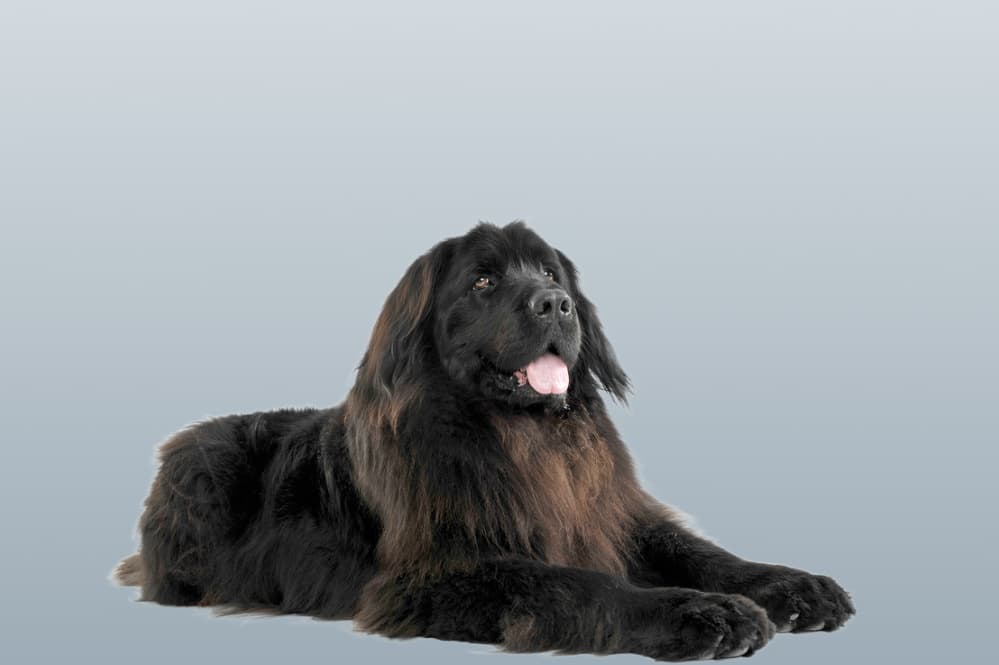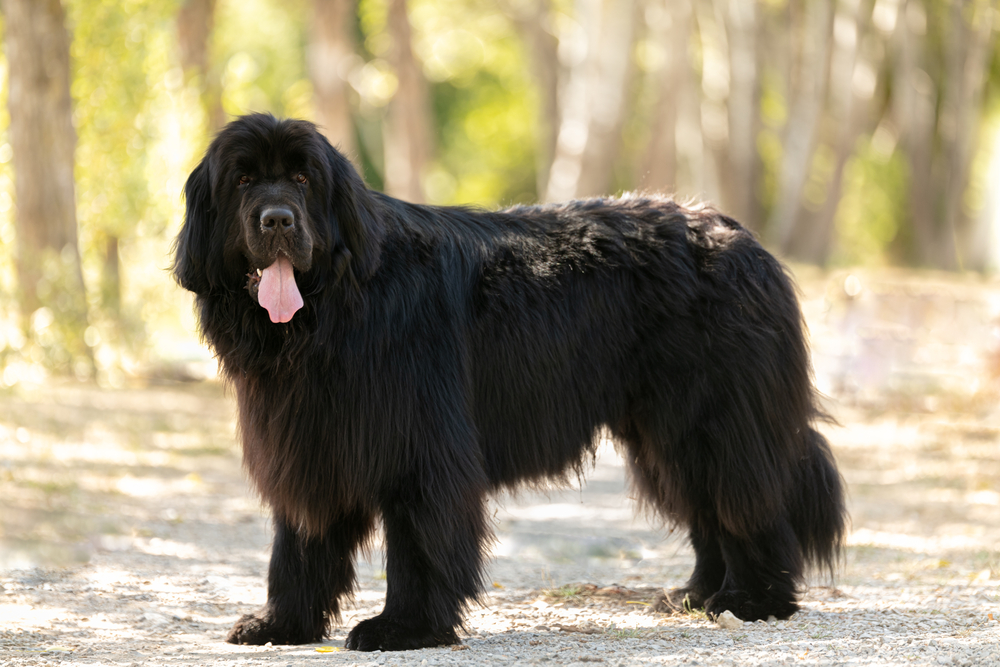History is rife with the heroic acts of Newfoundland dogs, and one of the unique breed’s stories hinges on the dedication of Seaman. When Lewis and Clark set out for their momentous 8,000-mile journey across America in 1802, Seaman took off with them. Along the way, Seaman proved crucial as he guarded them against wild animals and hunted game for the duo. Due to his dedication, Seaman appears in 10 different monuments of Lewis and Clark across the country.

Newfoundland
Standing about 30 inches at the shoulder with a weight of up to 150 pounds, meet the heavyweight nanny dog- Newfoundland or, if you like, Newfie. While arguments on the pronunciation of the dog’s name might be contested, the breed’s reputation as a good-tempered giant dog is indisputable.
Country of Origin
Canada
Breed Group
Working Group
Height
Male 27-29 In
Female 25-27 In
Weight
Male 130-150 Ib
Female 100-120 Ib
Life Span
8-10 years
In a Nutshell
Nana and Peter Pan. Do the two ring a bell? When J.M Barrie introduced his play Peter Pan in 1904, the sweet-natured Nana was the talk of the town. Although the fictional account of the dog’s babysitting ability might be a stretch of reality, the author’s characterization of the breed carries some truth. As a nanny, Newfie is an unusually sweet dog, gentle and affectionate to children. Not only is he friendly, but also protective. Very few (or perhaps none) of the large breeds have a better temperament than the Newfie. The giant dog is relatively tranquil, with a strong desire to please the owners and learn. This eagerness to learn makes Newfoundland quite easy to train.
Looking for a companion or a working dog? The Newfie will definitely capture your heart as long as you keep them engaged and meet their exercise needs.
Life With a Newfoundland
Looks & Personality

The Newfie is a powerful, massive dog with a broad, heavy head and slightly arched crown. The dog has a broad muzzle with a moderate stop, relatively small triangular ears, and deep-set dark eyes that are widely spaced. Newfoundland’s oily, water-resistant double coat partially explains their peculiar swimming prowess. The outer coat is coarse and moderately long, while the undercoat is dense and soft. Black is the commonest coat color, but finding Newfie with a white coat and black markings, black with blue highlights, or grey is not unusual.
If you want a mega Teddy Bear in a dog, the Newfoundland is the pet to bring home because of its sweet disposition. This dog is affectionate to family, especially children, very smart, and has an innate desire to please. Family times are the Newfie’s best moments. This means that leaving the dog home alone for extended periods or banishing them to the kennel dulls the giant dog.
The Newfoundland is a devoted and loyal companion that’s obedient to its master and mild with guests. While they rarely bark, these dogs tend to be very protective of family. Instead of an all-out attack on strangers, a Newfie typically stands between the family and the intruder when they detect a threat. Otherwise, the giant dog will meet visitors, children, and adults with a warm welcome.
A tip from a vet
A tip from a trainer
What about your Newfoundland?
Did You Know

Newfoundland puppies can gain a whopping 100 pounds in their first year of life.

Newfoundlands have a huge lung capacity that allows them to swim long distances, which was critical in water rescue operations and dragging fishing nets ashore.

James Buchanan’s Newfoundland Lara could lie motionless with one eye closed for hours, but never allowed her owner to get out of sight around the White House.
In The News
Famous Newfoundland Owners
The History Behind the Breed
Newfies come from the Canadian province of Newfoundland, where they worked with the region’s fishermen, undertaking dramatic water rescues.
Although the place of the breed’s origin is well established in history, the details of Newfoundland’s creation remain unclear, leading to many theories of their existence. The first theory suggests that Newfie is a cross of the extinct American Black Wolf and the Tibetan Mastiff that has evolved over the years. Another theory proposes that Newfoundland was created when the Vikings visited the Canadian province in 1000 A.D and left dogs that interbred and eventually bred with the Eastern Canadian wolves. The last theory suggests that Newfoundland is a product of crossbreeding of different breeds, including Mastiffs, Portuguese Water Dogs, and Pyrenean Sheep Dogs, between the 15th and 16 centuries.
During the 18th century, an English botanist- Sir Joseph Banks- acquired numerous Newfoundlands that George Cartwright named in 1775. But it was Swiss professor Albert Heim who identified and described the breed in the late 19 century. The Newfoundland nearly became extinct in the 1780s when the Canadian government imposed restrictions, including taxation, on owning dogs. Sir Edwin Landseer fought hard to revive the breed’s popularity by including the Newfoundland in his paintings, to the extent that the Newfie with the black and white coat was named Landseer in his honor. The American Kennel Club registered the first Newfoundland in 1879, with the initial Newfoundland champion being titled in 1883.
If a Newfoundland Could Talk…
A Quick Anatomy Lesson


As a large breed dog weighing over 100 pounds and deep-chested, Newfoundland is vulnerable to conditions such as hip dysplasia and gastric dilatation and volvulus.
Common Health Problems
What about your Newfoundland?
















